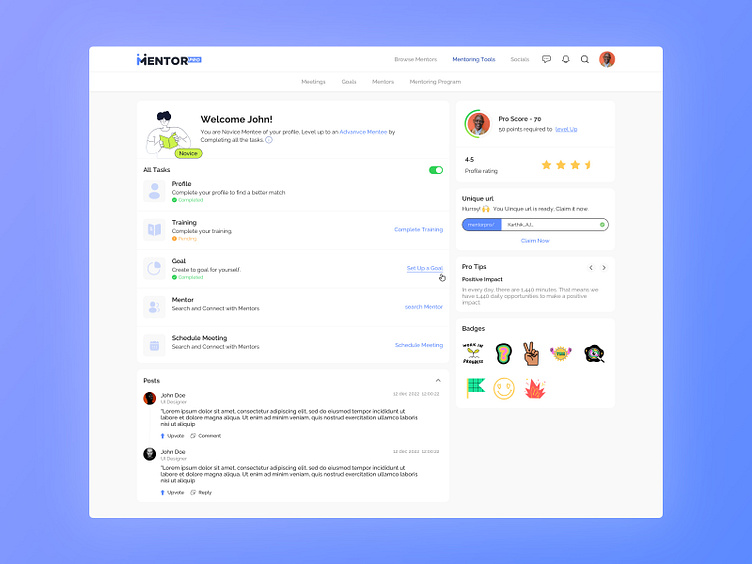Mentor Pro
A mentoring program can greatly benefit an organisation by providing guidance and support to employees, promoting growth and development, and enhancing job satisfaction. However, managing a mentoring program can be challenging, especially when dealing with large groups of participants. This is where a mentoring program dashboard can be a valuable tool. In this post, we will explore the key elements of an effective mentoring program dashboard design that can enhance engagement and ensure success.
Clear and Simple Navigation: The first and foremost element of an effective mentoring program dashboard is clear and simple navigation. Participants should be able to easily access all program-related information, such as their mentor/mentee information, program milestones, and resources. A well-designed dashboard should have an intuitive navigation system that guides participants through the program.
User-Friendly Interface: The dashboard interface should be user-friendly and easy to navigate. The use of icons, images, and color schemes can help participants quickly understand the information presented. The interface should also be visually appealing and engaging, to encourage participants to visit the dashboard regularly.
Real-time Progress Tracking: To keep participants engaged and motivated, it's important to provide real-time progress tracking. The dashboard should display the progress made by participants towards their program goals, such as the number of mentoring sessions completed, feedback received, and any milestones achieved. This can help participants track their progress and stay on track towards their goals.
Communication and Collaboration Tools: To facilitate communication and collaboration between participants, the dashboard should include tools such as chat rooms, discussion forums, and video conferencing. These tools can help participants connect with each other, share their experiences, and receive support from their peers.
Personalised Features: Personalisation is a key element of an effective mentoring program dashboard. Participants should be able to customize their dashboard based on their individual preferences and needs. For example, they should be able to set reminders for upcoming meetings, access resources specific to their development needs, and receive tailored feedback from their mentor.
Conclusion: An effective mentoring program dashboard can greatly enhance engagement and success in a mentoring program. By incorporating clear and simple navigation, a user-friendly interface, real-time progress tracking, communication and collaboration tools, and personalized features, participants can have a positive and rewarding experience in the program.
